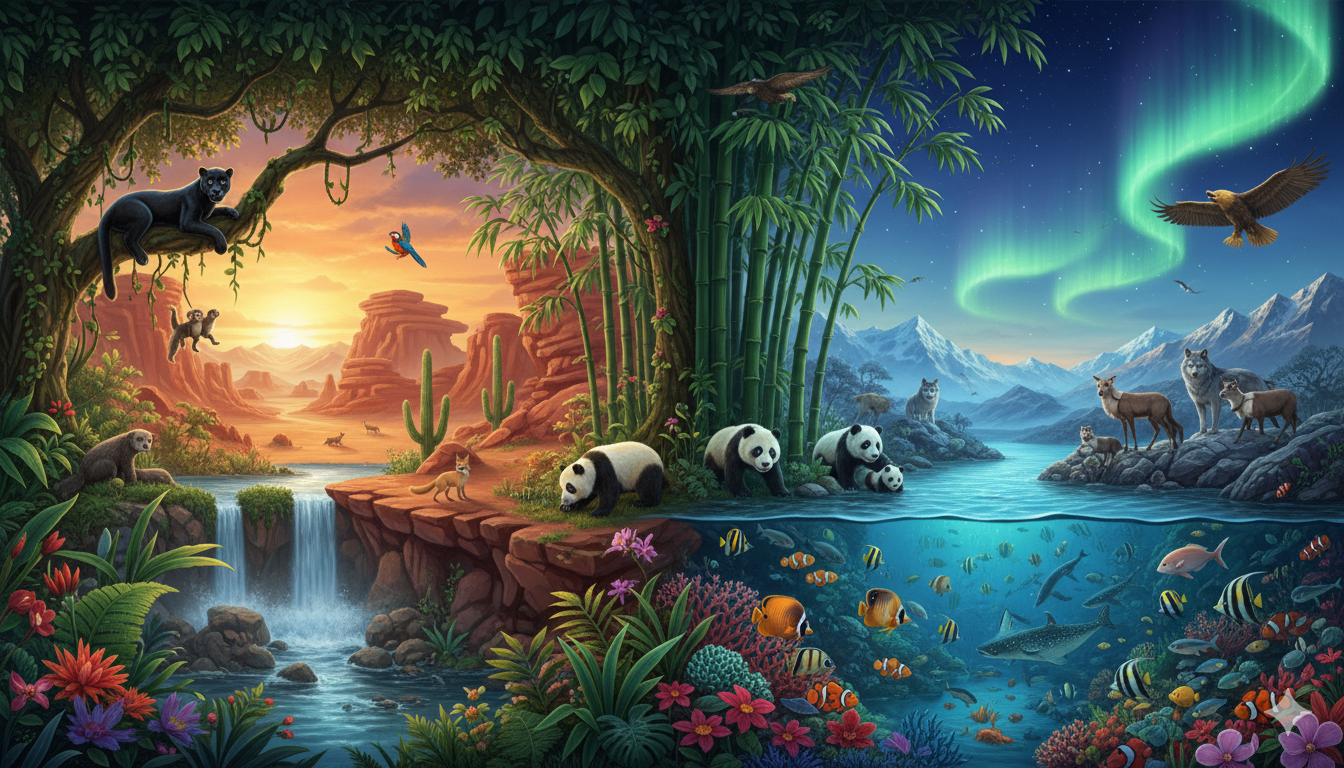The Earth is home to an astonishing variety of life forms known as flora (plants) and fauna (animals). Together, they create balanced ecosystems that support life on our planet. From the frozen Arctic tundra to the humid rainforests of the Amazon, every region holds unique species that play crucial roles in maintaining nature’s balance.
Flora: The Green Foundation of Life
Plants, trees, and other forms of vegetation form the backbone of all ecosystems. They produce oxygen, store carbon, and provide food and shelter for countless species.
1. Tropical Rainforests
Tropical rainforests, such as those in the Amazon and Congo Basin, are often called the “lungs of the Earth.” They are home to over half of the world’s plant and animal species. Towering trees like mahogany and kapok dominate the canopy, while orchids and ferns thrive beneath.
2. Desert Plants
Despite harsh conditions, desert plants like cacti and succulents have evolved to survive with minimal water. Their thick stems and waxy surfaces help them store moisture and reflect heat.
Fauna: The Animal Kingdom of the World
The animal world is incredibly diverse—from microscopic plankton to massive blue whales. Each species has adapted to its environment in fascinating ways.
1. Terrestrial Animals
On land, animals range from African elephants to Arctic foxes. In tropical forests, colorful birds and primates swing through trees, while predators like tigers and jaguars maintain ecological balance.
2. Marine Life
The oceans are teeming with life. Coral reefs, often called “the rainforests of the sea,” are home to thousands of fish, crustaceans, and mollusks. Whales, dolphins, and sea turtles also contribute to ocean biodiversity.
Endangered Species and Conservation
Unfortunately, many species are at risk due to human activities such as deforestation, pollution, and illegal hunting. Organizations around the world are working to conserve wildlife and restore habitats.
-
Pandas in China are being protected through bamboo forest restoration.
-
Tigers are safeguarded by anti-poaching efforts.
-
Marine species benefit from protected marine reserves and pollution control programs.
The Importance of Biodiversity
Biodiversity ensures the stability of ecosystems. It provides food, medicine, clean air, and water. Losing even one species can disrupt this delicate balance. Humans rely on biodiversity for agriculture, medicine, and climate regulation.
Conclusion
The flora and fauna of our planet are not just beautiful—they are essential for life. Every tree, insect, bird, and fish plays a part in Earth’s complex web of life. Protecting them means protecting ourselves and the future of our planet.
